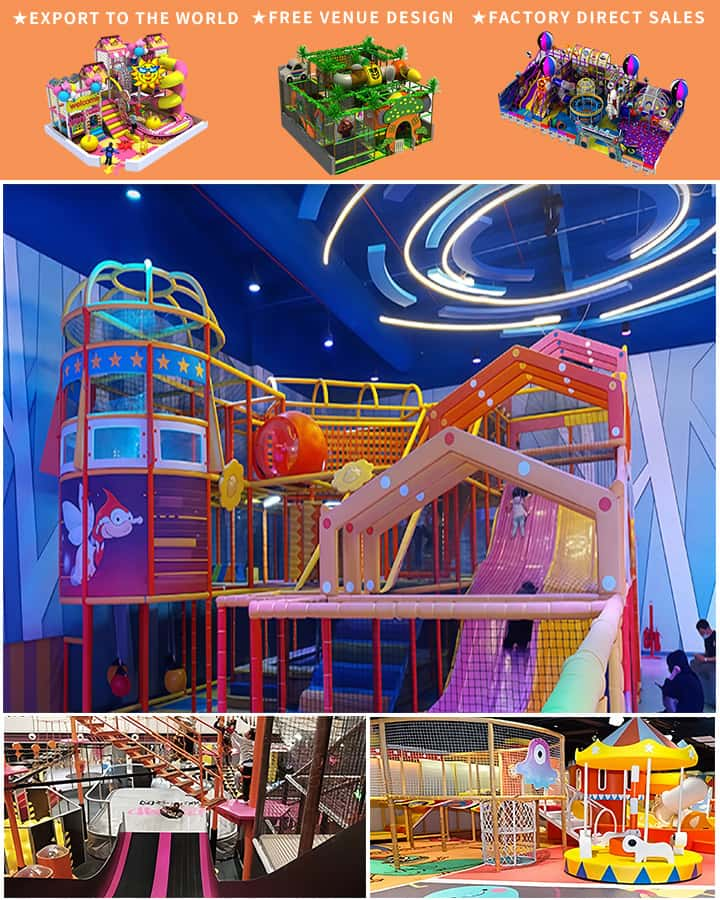Building an indoor playground has become a popular venture for entrepreneurs looking to capitalize on family entertainment. However, one critical aspect that must be carefully considered is construction costs. The expenses associated with indoor playground construction can vary widely based on several factors, making it essential for potential builders to understand what influences these costs and how they can be managed.
Key Factors Affecting Indoor Playground Construction Costs
Size of the Playground
The size of the indoor playground is one of the most significant determinants of construction costs. Larger spaces not only require more square footage but also additional structural support, safety measures, and specialized equipment. Consequently, the cost per square foot tends to decrease as the total square footage increases due to economies of scale.
Type of Equipment
The types of play structures and equipment selected will significantly impact costs. Custom-designed, high-quality climbing walls, slides, ball pits, and interactive installations are often more expensive than standardized off-the-shelf options. Moreover, some premium features like trampoline parks or multi-level soft play areas come with higher price tags and may require specialized installation processes.
Safety Measures and Compliance
Ensuring safety and compliance with local regulations is paramount in indoor playground design. This includes fire-resistant materials, proper ventilation systems, cushioned flooring, and adherence to building codes. These safety measures add to the overall cost but are crucial for preventing accidents and ensuring long-term viability.

Location and Site Conditions
The geographical location and existing site conditions can affect construction costs. Urban locations with higher real estate prices will naturally be more expensive than suburban or rural areas. Additionally, if the site requires extensive renovation or foundation work, this will add to the overall budget. Accessibility of the site for transporting materials and equipment is another factor to consider.
Labor and Installation
Labor costs can fluctuate based on regional wage levels and the complexity of the project. Skilled laborers experienced in indoor playground construction are essential for ensuring quality installation and adherence to safety standards, which can increase overall expenses.
Cost Breakdown: An Example
To give an idea of how these factors play out in real numbers, let’s consider a hypothetical scenario for a mid-sized indoor playground covering 5,000 square feet. Here’s a rough breakdown:
- Land Acquisition: $250,000 (varies greatly depending on location)
- Construction Materials: $300,000 (including steel frames, flooring, safety mats)
- Play Equipment: $150,000 (custom climbers, slides, etc.)
- Safety Systems: $50,000 (fire protection, ventilation)
- Labor Costs: $200,000 (installation, craftsmanship)
- Permits and Fees: $50,000 (local permits, inspections)
- Contingency Fund: $50,000
Total Estimated Cost: $1,000,000
Budget Management Tips
To keep indoor playground construction costs under control, consider the following tips:
- Plan and Design Efficiently: Invest time in a detailed design phase to avoid costly modifications during construction. Consult with experienced designers who can offer cost-effective yet creative solutions.
- Prioritize Equipment: Determine which play equipment is essential and which can be added later. This approach allows you to start with a basic setup and gradually expand.
- Compare Vendor Quotes: Obtain multiple quotes from different suppliers and contractors to ensure competitive pricing without compromising on quality.
- Leverage Technology: Use advanced construction management software to track expenses, schedule tasks, and manage resources efficiently.
Conclusion
Indoor playground construction involves various costs that can quickly add up if not carefully planned and managed. By understanding the key factors affecting these expenses and implementing strategic budget management practices, you can create a safe and enjoyable environment for children while maintaining financial viability. Investing wisely in the initial stages will pay off in the long run by attracting families and ensuring the success of your indoor playground.




